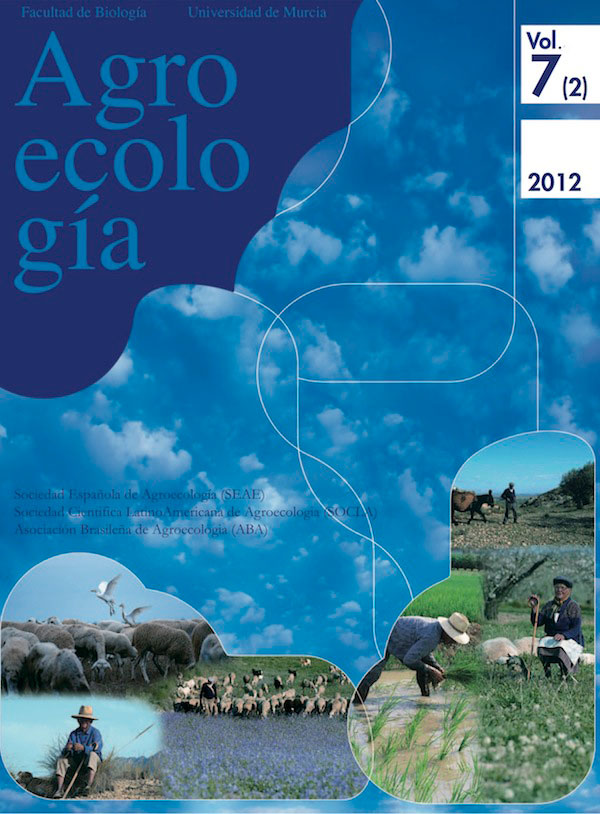Installing agri-forestry systems with beef cattle production farmers in Colonia Gestido (uruguay)
Abstract
Located north of Uruguay, Colonia Gestido occupies 3000 hectares distributed in 55 farms devoted to crops and fruit production diversified with livestock and dairy. In the frame of a PhD thesis in Agroecology (Colombia),“the poor global performance of these production systems”is identified as a problem because of “inadequate animal-vegetal integration” and “scarcity of multipurpose trees and shrubs”, among other reasons. To overcome these restrictions, the assessment of local alternatives in the design of production systems that integrate animals, crop and trees is proposed as general objective. The integration of trees in intensive tree-pasture systems, allows the generation of fooder banks with high dense fodder shrubs combined with grass of high productivity, and trees for shade and wood. Fodder shrubs provide food in times of drought by extracting water from deeper layers than those explored by herbaceous species, produce high quality forage biomass, allow increases in stocking rate and productivity, reduce the heat stress of the animals, favor the regulation of hydrological cycle, enhance the natural pest control by increased biodiversity, and mitigate the effects of climate change. This article presents the design and management of two modules of intensive tree-pasture systems in the first year of installation, their behaviors are evaluated with biophysical indicators, and learning achievements and areas to be improved are outlined.Downloads
Las obras que se publican en esta revista están sujetas a los siguientes términos:
1. El Servicio de Publicaciones de la Universidad de Murcia (la editorial) conserva los derechos patrimoniales (copyright) de las obras publicadas, y favorece y permite la reutilización de las mismas bajo la licencia de uso indicada en el punto 2.
2. Las obras se publican en la edición electrónica de la revista bajo una licencia Creative Commons Reconocimiento-NoComercial-SinObraDerivada 3.0 España (texto legal). Se pueden copiar, usar, difundir, transmitir y exponer públicamente, siempre que: i) se cite la autoría y la fuente original de su publicación (revista, editorial y URL de la obra); ii) no se usen para fines comerciales; iii) se mencione la existencia y especificaciones de esta licencia de uso.
3. Condiciones de auto-archivo. Se permite y se anima a los autores a difundir electrónicamente las versiones pre-print (versión antes de ser evaluada) y/o post-print (versión evaluada y aceptada para su publicación) de sus obras antes de su publicación, ya que favorece su circulación y difusión más temprana y con ello un posible aumento en su citación y alcance entre la comunidad académica. Color RoMEO: verde.





